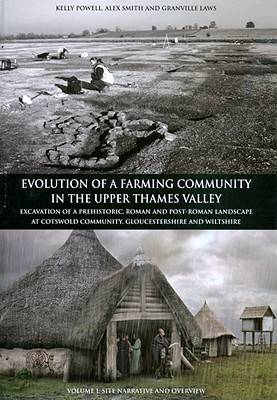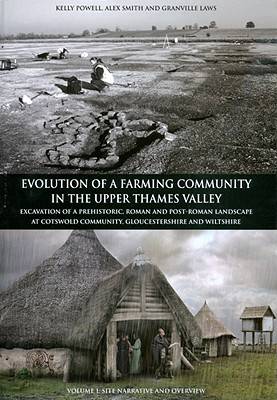
- Retrait gratuit dans votre magasin Club
- 7.000.000 titres dans notre catalogue
- Payer en toute sécurité
- Toujours un magasin près de chez vous
- Retrait gratuit dans votre magasin Club
- 7.000.000 titres dans notre catalogue
- Payer en toute sécurité
- Toujours un magasin près de chez vous
Evolution of a Farming Community in the Upper Thames Valley
Excavation of a Prehistoric, Roman and Post-Roman Landscape at Cotswold Community, Gloucestershire and Wiltshire, Volume 1: Site Narrative and Overview
Alex Smith, Kelly Powell, Alexander Smith, Granville Laws
25,45 €
+ 50 points
Description
The site at Cotswold Community in the western reaches of the Upper Thames Valley has been a focus for human activity since Neolithic times. Successive Bronze Age, Iron Age and Roman settlements developed within an increasingly open grassland landscape, which was heavily exploited for the growing crops and the grazing of animals. The spiritual lives of the inhabitants were glimpsed through a series of structured pit deposits and ritual monuments, including a potential Neolithic timber circle and Bronze Age round barrows. One of the most striking landscape features was a late Bronze Age/early Iron Age pit alignment that extended over 500m, possibly marking one of the earliest attempts at defining territory on a large scale. It was still a visible feature for some time as it partly dictated the position of the boundaries of a Roman farmstead, which occupied the site from the 1st to 4th centuries AD. The farm lay in the shadow of Roman Cirencester less than 5km to the north and may even have been involved in the recycling of refuse from this important urban centre. Following abandonment of the Roman farmstead there was no further occupation on site, although a small number of Saxon agricultural structures indicate continuing use of the land, which may now have been part of a locally-centred Saxon estate.
Spécifications
Parties prenantes
- Auteur(s) :
- Editeur:
Contenu
- Nombre de pages :
- 222
- Langue:
- Anglais
- Collection :
- Tome:
- n° 31
Caractéristiques
- EAN:
- 9781905905164
- Date de parution :
- 01-04-10
- Format:
- Livre relié
- Format numérique:
- Genaaid
- Dimensions :
- 211 mm x 300 mm
- Poids :
- 1156 g







